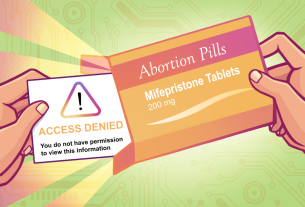|
Getting your Trinity Audio player ready...
|
It’s no secret that convenience stores are struggling with labor. Turnover in the industry in 2021 reached 150% — its highest level since 2012, according to NACS’ most recent State of the Industry Compensation Report.
As 2023 approaches, it’s apparent that offering decent pay isn’t enough to attract and retain talent. Prospective and current employees now also expect things like growth opportunities, unique perks and socially responsible missions in their future companies, experts said in a recent NACS labor webinar.
Here are five ways c-stores can improve their hiring and retention efforts in 2023.
Gauge what employees actually want
The first step to increasing hiring and retention is to understand what current and prospective employees value and want to see in their roles, Kristin Brennan, vice president of marketing for workforce management company Legion, said during the webinar.
This can be done through surveying, conducting focus groups or even visiting stores in person to talk to employees — the latter of which is arguably most effective, Brennan said.
“Building connection is beyond a flier on a bulletin board in a break room,” Brennan said. “Tools and surveys … it doesn’t replace a human conversation. Get out there and talk to people live, it’s a great way to build connection but also understand what’s really on the minds of those hourly employees and their managers.”
According to a recent Legion survey, 62% of hourly employees said they value flexible working hours more than anything, and 43% said they value the ability to pick up extra shifts.
While increased pay is almost always at the top, retailers need to start asking what other than more pay would entice people to take or leave a job, Brennan said.
“Wages rise to a certain level, and then you need to look beyond that,” she said.
Lean into community impact
C-store retailers that communicate their company’s impact and philanthropic efforts should be able to hire and retain more employees, Brennan said, noting that she’s seeing more retailers becoming mission-driven because of this.
The numbers support this, too. According to Legion, 75% of hourly workers said they’d take a smaller salary to work for a company that was mission-driven and aligned with their values, while 64% of millennials said they won’t take a job that isn’t socially responsible.
“It’s important to reach employees to make sure they feel connected to the mission,” Brennan said.
Emily Lane, head of content for task management company Zipline, referenced Sheetz as an example. The company’s Sheetz For the Kidz program — which raises money and provides holiday gifts to underprivileged children — not only includes its employees, but was created by two district managers.
“[Sheetz] involves their frontline workers and makes sure they’re engaged in these initiatives, and that helps bring meaning to the employees’ work,” Lane said in the webinar.
Sheetz’s For the Kidz program was created by two district managers.
Try new perks
Offering more money is the obvious go-to for improving hiring and retention, but testing new ways to actually pay employees can take things further, with options like instant on-demand pay, which has been adopted by non c-store retailers like Walmart.
Two years ago, Legion asked hourly employees what besides increased pay would cause them to take another job. While only 2% of respondents at the time said instant pay, that percentage has grown tremendously since then, “almost becoming the expectation” today, specifically among 18 to 44 year olds, Brennan said.
“Waiting two weeks for a paycheck is kind of becoming an antiquated proposition,” Brennan said. “I think instant earned pay will become the norm.”
C-store retailers can also consider taking on a four-day work week — which Weigel’s began doing earlier this year — although Brennan considers offering employees more scheduling flexibility to be more important.
But simply implementing these innovative practices isn’t enough. Companies also need to let prospective employees know about these benefits via career pages and other promotional means, Brennan said.
“Test and embrace these things, and then market them as a recruitment tool for hourly employees,” she said.
Lay out a career path
According to Legion, 35% of hourly employees said they’re looking for an employer they can stay with long term. For c-stores, having a set career path hourly employees can take within the company — from becoming a store manager to moving to the corporate office — will go a long way, Brennan said. She also noted that retailers would be remiss to not market this career path on their website and other promotional assets as well.
“C-stores should take the time to define those career paths and create opportunities and market them, so when people are looking for jobs, they can see why they’d want to work for them,” Brennan said.
Brennan highlighted Love’s Travel Stops & Country Stores, whose Road to Success initiative provides store employees with opportunities to progress into leadership positions. For example, new managers participate in multi-day training at the company’s corporate office, and also meet for a yearly retreat to discuss operations and strategy.
“It’s best practice to have an annual event for managers so they feel a connection to the company, and understand how to be better in their roles and help their hourly employees grow,” Brennan said.
Simplify processes with automation
Legion’s survey found that 60% of c-stores operators still rely on manual processes for things like scheduling hourly shifts, according to Legion.
“It’s adding unnecessary stress, making it almost impossible to operate at scale,” Brennan said.
Brennan noted automation is a “key way” for retailers to optimize labor efficiency and simultaneously improve the employee experience. In addition to automating labor practices, automation can help stores determine how many people they need working in stores at a given time. For instance, by using an AI system for demand forecasting, retailers can predict how many items they sell every 15 minutes by location, and even account for how local events and the weather impact store demand.
“With intelligent automation, it’s about empowering managers,” Brennan said. “They shouldn’t be spending 10 hours a week scheduling.”



